6.4 CHANGING LIVING STRUCTURES
Before the coming of the European colonizers and administration, Luo settlements and houses were usually round in form. The houses were made of sticks and mud walls and grass thatched roofs. The rectangular Western form of house structures were soon introduced in Luoland by the early 20 th Century. They were first built at administrative centers, as well at missions and schools. Soon many Luos in their own houses were adopting these styles of building. Some homes became well-planned structures with exotic trees planted for shade and beauty. Although such houses were still made with grass and papyrus reed thatch, corrugated iron was later available and was used for roofing by some Luo who had money earned from government employment.
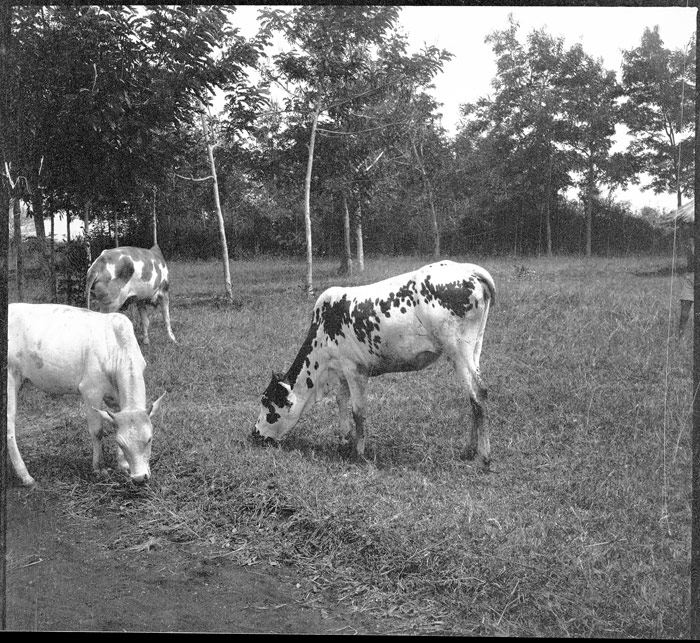
1998.349.50.1
Luo homestead in Uyoma village with exotic trees
and cattle grazing outside the compound
Evans-Pritchard, 1936
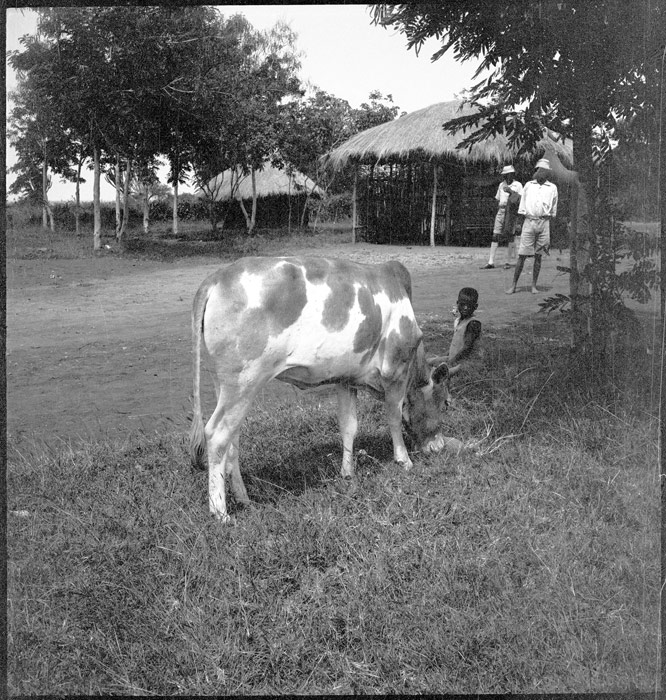
1998.349.206.1
Luo homestead in Uyoma village with huts, exotic trees
and cattle grazing inside the compound
Evans-Pritchard, 1936
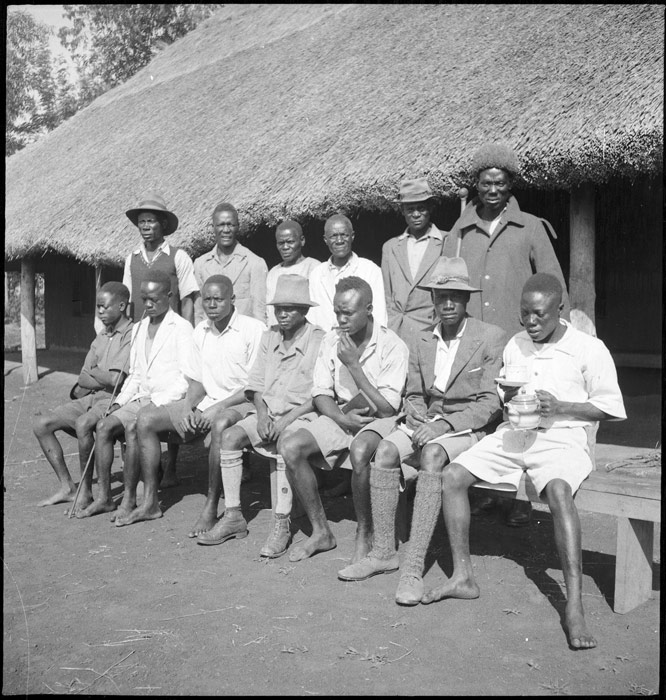
1998.349.19.1
An elaborate grass-thatched house with extended
veranda supported by large timber posts. This may be
a colonial local administration building and the men
probably undergoing administration training.
Evans-Pritchard, 1936
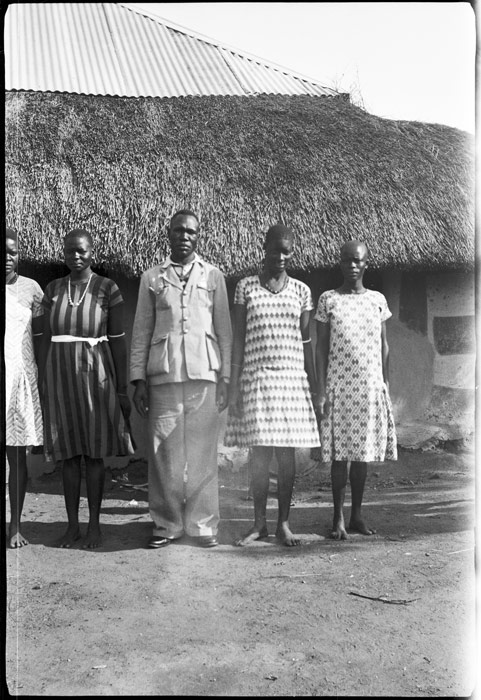
1998.349.192.1
Luo colonial chief Owor with his wives.
Perhaps he is in his home, a corrugated iron
and papyrus thatch rectangular house.
Evans-Pritchard, 1936
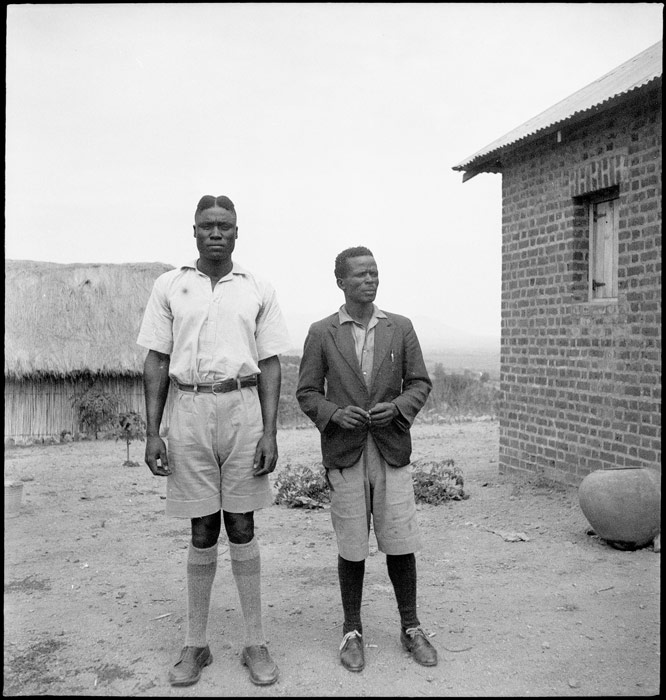
1998.349.6.1
Two Luo men inside a compound with rectangular houses.
One house has brick walls and a corrugated iron roof
whilst the other has a grass/papyrus reed thatch.
This is possibly at a colonial administrative center.
Evans-Pritchard, 1936